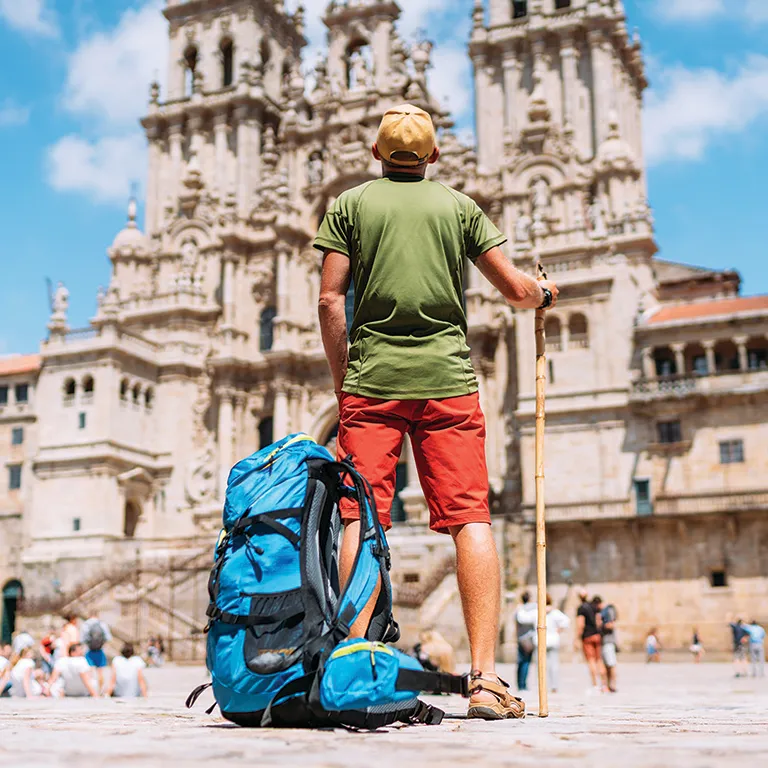THE BEST IS YET TO COME

Travel is on many bucket lists and keeping a prioritized written list of dream trips is a great way to make sure the most desirable ones get done while you have the funds and health to enjoy them. Who wouldn't want to gaze down at the beautiful landscape of the Arno Atoll in the Marshall Islands from a plane's window seat?
Why it's important to have a bucket list after the age of 50
Once you’ve passed that half-century mark, it’s all downhill from there, right?
Not so, say ‘SuperAgers’ and Western University professor Angela Roberts. Roberts is the chief investigator for the Canadian site of an international study funded by the National Institutes of Aging called the SuperAging Research Initiative. The study came about as an offshoot of research on dementia, she says, adding that the groups they are looking at are “80 and over who are functioning cognitively like others who are in their 40s and 50s.” To complement the research looking at what goes wrong with brains that shows signs of dementia, this study looks at “what’s right with SuperAgers.”
What unites those in the SuperAger category?
“They have extraordinary resilience, self-determination and a positive mindset,” says Roberts. She adds that if you don’t have a positive mindset, you won’t be looking forward and therefore won’t care what the future holds. “This 10-year program (of research) tells us having a bucket list is very important,” she adds.
The study’s scope is worldwide, but Roberts cites one Canadian participant who is 92 years old and has walking the Camino Trail in Europe on her bucket list. “She says, ‘I don’t want to do it the soft way; I want to do it hardcore. I don’t want to stay in hotels. I want to sleep on the trail.’”
Londoner Norma Yau (66) and her partner Roberto Gomez (72) agree that the Camino de Santiago is bucket-list worthy. The couple completed part of it in the spring, for the second time. In 2014 they walked the French portion and did 700 kilometres in 24 days. In May they did the Portuguese section by walking 300 kilometres in 15 days.
This is just one of the many items on their combined bucket list. “When we got together 11 years ago and compared lists, we were surprised how long it was when we combined them, but we’ve slowly whittled away on it,” she explains. Yau, a proponent of writing your bucket list(s) down, says she has several categories.
In addition to travel, hers includes people that she wants to see and things she wants to do. The pandemic reminded her that it’s important to have in-person visits with people who are important to you, because you’re important to them, too. “As you get older that becomes an important bucket list item because you don’t have as many years left but they (distant relatives/friends) don’t either,” she explains, listing an elderly aunt and friends who have moved away as people on her to-visit bucket list.

A backpacker stands in the Plaza del Obradoiro at the end of his Camino de Santiago pilgrimage.
As a retired licensed insolvency trustee, Yau realizes the importance of being able to fund her bucket list. A senior wealth advisor and portfolio manager with Scotia Wealth Management Janice Evans has some comments about that. She says that by the time most Canadians are in their 50s and 60s, they’ve paid off most or all of their mortgage, but if they haven’t doing so would be a good first step in freeing up money to fund the bucket list. Even more important is paying off any longer-term, high-interest credit card debt. With most credit card interest running at around 20 per cent, she says using a line of credit (interest rate can vary but is often prime plus two per cent) could be a good option.
Many of her clients have set aside money over the years to fund dream trips and other bucket list items. Other ways include using money in a TFSA (tax free savings account), since there’s no tax penalty for pulling that money out. This is not true of tapping into an RRSP (registered retirement savings plan). Others use their line of credit to fund trips since the interest rate is lower than credit cards.
According to Evans, some of her clients in their 50s, 60s and 70s have funding a grandchild’s education as an item on their bucket list. A RESP (registered education savings plan) can be set up by grandparents alone or in concert with the parents to save for any form of post-secondary education (college, university, trade or training school). Others want to pass money on to their grandkids in a safer, staged way so they have funds for a downpayment on a home or other expenses; they set up an ‘in trust for account,’ she says. “It can be set up as a staggered approach with payments dispersed in various increments, so they aren’t handed a big sum of money at 18.”
Just as important as funding your bucket list is being able to physically do it. Yau says that they moved up the timing of their second Camino trek because of Gomez’s concerns that he might not be able to enjoy it as much in the future. Health coach and personal trainer Carolyn Martyn, of Coach Carolyn Wellness, says that the most important element of being able to stay fit enough to do all the things on a bucket list is strength training. “Many women have a tendency to let that be the first thing to drop as they age,” she says. And it’s important to stave off osteoporosis, which studies say is more highly diagnosed in females over the age of 50 than breast cancer. This is alarming because osteoporosis can affect one’s strength and balance and lead to injuries. “You’re never too old to strength train,” says Martyn.
Though Though it’s important to do aerobic activities, like walking or swimming, strength training helps maintain the ability to get down and up from a sitting position easily, push or pull a door open/closed, and do other day-to-day activities. Working out in a way that mimics these activities is called functional training.
She adds that it’s important to challenge yourself. Though not a proponent of the ‘if it doesn’t hurt it doesn’t help’ mentality, Martyn encourages her clients to “work to failure.” This means that the weight used should be heavy enough with enough reps that it should always feel like a challenge. “At the end of a set, you should feel like, ‘I can’t do this last rep or two,’” she explains.
Strength training isn’t dependent on going to the gym or having a full set of weights. Body weight can be used by doing squats (done lying on the floor using bands if you have bad knees), pushups and planks.
Martyn says balance is also increasingly important as we age. Practicing yoga or simply standing on one leg at a time can improve balance. Flexibility also plays into being able to fulfill the bucket list of activities. Martyn recommends taking five minutes once or twice a day to do some stretching, perhaps in the morning after that first cup of coffee when your body has warmed up and then again at night before bed.
Some people want to stay in shape to be able to climb Maccha Picchu, but others have specific physical goals on their bucket lists – doing a 5K fundraising walk or being able to play soccer with the grandkids.
Whether you want to be a SuperAger and maintain mental acuity, travel the globe or run a marathon, having a written bucket list as you pass the half-century mark can help ensure all those desired outcomes are met and your bucket is full.
